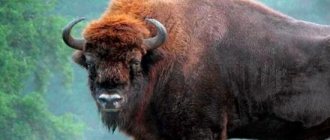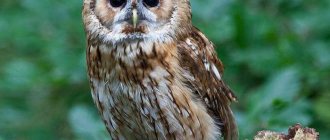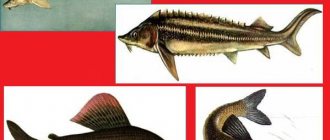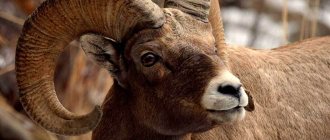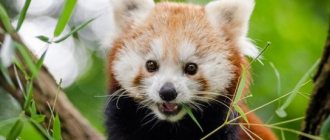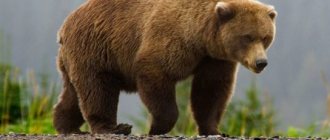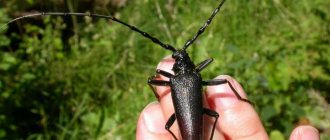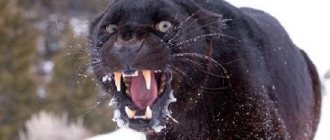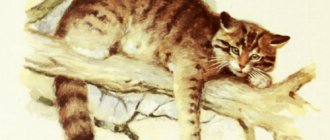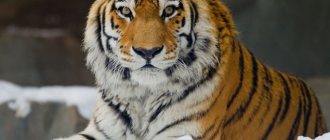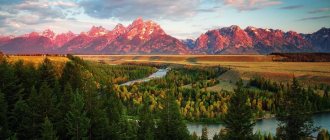The bison is an animal from the bison genus, bovine subfamily, bovid family, artiodactyl order. It is the last representative of European wild bulls. It lives in deciduous, coniferous and mixed forests in the temperate zone. The closest relative of the bison is the American bison, and when crossed with it, bison are born. In the 20s of the 20th century, the species almost disappeared from the face of the earth. All the bison that live on our planet now descended from only 12 individuals, which at the beginning of the last century were preserved on the territory of nature reserves.
Description of the bison
The bison is the heaviest and largest land mammal in Europe, although its size has decreased in recent years.
The weight of a modern adult male is 400-900 kg. Body length is about 3 m, height up to 2 m. Females are inferior in size to males: their body length is up to 2.7 m, height up to 1.7 m. — Advertisement —
The bison has a massive front part of the body, wide and high. The neck is short, the back forms a high hump on top. The chest is wider in front. The head is set low, with a wide, convex forehead, and the muzzle is small. The horns are small, protruding, black, with a smooth, polished surface. The ears are short and wide. The eyes are small with thick eyelashes. The limbs are strong, thick, shorter in front than in the back. The length of the tail is about 80 cm, at its end there is a thick brush.
The body of the bison is covered with thick hair, long and mane-like on the chest, resembling a beard in the throat and chin area. The hair on the head and forehead is curly. It is short at the back. Belovezhsky bison are grayish-brown with ocher-brown color, Caucasian bison are dark, brownish-brown with a chocolate tint. Summer fur is dark brown.
The bison has a good sense of smell and hearing, but slightly less developed vision.
Features of bison nutrition
The bison's diet consists of a variety of vegetation, about 400 plant species. In summer, they eat succulent grass, shoots of bushes and tree bark. In autumn, they graze mainly in oak forests, where they eat acorns. In winter, the green parts of plants are dug out from under the snow. They can also feed on mushrooms, berries, lichens and pine needles. An adult bison needs 40-60 kg of green mass and approximately 50 liters of water per day. For this reason, in winter, bison eat snow, and in summer they go to water twice a day.
Popular message topics
- The Emergence of Life on Earth
A small child, having received and realized the first pieces of information about the world around him, begins to wonder how he came to this very world from where he came. Similarly, a person, having realized some biological, - Continent of Australia
Australia is the smallest continent on our planet, washed by the Indian and Pacific oceans. Its territory occupies only a small amount of land. This is the only state that occupies an entire continent, and is called completely - Constitutional Court
The law on the establishment of the Constitutional Court of the Russian Federation was first adopted in 1991. The main provisions and functions of the Constitutional Court of the Russian Federation are spelled out in Article 125 of the Constitution of the Russian Federation. The Constitutional Court of the Russian Federation consists of an odd number of judges (19 people).
Distribution of bison
— Advertising —
Previously, bison were distributed from the Iberian Peninsula to Western Siberia, including Great Britain. At the same time, they lived both in forests and in open areas. Due to intensive hunting, the bison population, and with it its habitat, have noticeably decreased. Now these animals are found only in Belovezhskaya Pushcha and the Caucasus.
Unique equipment
The clinic is equipped with the most modern equipment that is used in world dentistry. Operating microscopes Carl Zeiss and Karl Kaps (Germany) in a unique configuration are designed for the treatment of root canals of teeth. The system allows you to visualize the treatment process on the monitor, as well as record video on disk. The Galileos device (Germany) is used for 3D computed tomography. It is the safest tomograph in the world (effective dose ~ 29 mSv). Florida Probe computer system (USA) - for diagnosing diseases of periodontal tissue (gum). and lateral projections (TRG), photographs of the hand, tomograms of the temporomandibular joints. It is the safest orthopantomograph in the world (effective dose ~ 16 mSv). The VECTOR device (Germany) is effective in the non-surgical treatment of gum diseases. The ZOOM 3 system (USA) is designed for professional teeth whitening. A snow-white smile in 45 minutes. The face bow and articulator Amann Girrbach (Germany) allow you to take into account the specific movements of the lower jaw in three planes and achieve maximum chewing efficiency during prosthetics. The Sirona TENEO dental chair (Germany) is equipped with a thermoregulation system, a massage function and lumbar support. Patients have already nicknamed this chair “cosmic”.
Common types of bison
Three subspecies have been described for the bison, of which only one remains in nature, the Belovezhsky one:
- The Belovezhsky (plain) bison (Bison bonasus bonasus) previously lived from the Pyrenees to western Siberia. Larger in size than other subspecies, it also has longer legs.
- The Caucasian bison (Bison bonasus caucasicus) was common in the mountain forests of the Caucasus. Smaller in size than the Belovezhsky, the coat is dark, curly, the horns have a characteristic curve.
- The Carpathian (Hungarian) bison (Bison bonasus hungarorum) was found in Transylvania and the Carpathians.
Bison behavior
The natural habitat of the bison is forests and forest-steppes, but due to hunting, the animal went into remote places and survived only in dense forests.
Bison lead a sedentary lifestyle in a small area of forest, which they leave only in the absence of food. They live in herds of 5-20 individuals. The herd includes females and growing young; adult males live alone or in bachelor groups. The herd is led by an old, experienced female. Bison move through the forest almost silently and silently. They communicate with each other using short grunts or snorts when in danger. They move at a slow pace, go to a gallop only in dangerous situations, and can also jump. They graze in the mornings and evenings, resting during the day. Bison have good hearing and sense of smell, but poor eyesight. The character is calm, non-aggressive and not prone to attacks.
Character and lifestyle
Those who believe that these animals were revived from an almost extinct species quite easily are mistaken. This required a lot of dedicated and painstaking work from a person who took full responsibility for this species.
Without humans, it would be difficult for the bison to survive. Although, on the other hand, it is man who is the main cause of all his troubles. Scientists needed a lot of time and patience to study the life and habits of this herd animal. Only old bulls are interested in living alone. At the head of the herd is a female bison with great strength and experience.
Despite the huge and massive size of the bison, there is a sense of ease in its movement. The animal escapes from danger with a fast gallop, reaching about 40 km/h. This speed is not the limit of the animal's skill. It is not difficult for a bison to jump over a 2-meter barrier, and it does it from a standing position.
The strength of the bison is the reason for true legends. Its power is not wasted on trifles. Only moments of danger or rage can provoke its awakening. The rest of the time the animal shows unprecedented calm and peacefulness.
He is most active in the morning or evening. Their daytime is taken up by rest, which includes sleeping or taking “sand baths” with their tails whipping up dust.
The animal shows obvious aggression towards its opponents. At first he shakes his head, snorts and looks at his opponent with hostility. Then he pounces on him and hits him with all his strength with his horns.
The bison shows extraordinary calm towards people. He has no fear of them. There are times when some make a sudden lunge forward as if in self-defense.
But among them there are also those who approach a person very closely, pretending that no one is nearby. These animals have never broken fences, although it will not be difficult for them to do this.
Only those bison that are in captivity can behave this way. Free animals prefer to be more careful. They try to move a long distance from the person. The thing people should be most wary of is the female with her baby next to her. At such moments, she is capable of destroying, destroying and killing everything, protecting him.
No matter how good-natured bison are, when meeting them, great caution must be exercised because although this is a calm animal, it still belongs to the category of wild ones.
Bison breeding
The mating season for bison begins in August-September.
At this time, the males begin to exude a pronounced musky odor, they come close to the herds, rub against trees, dig the ground, and stand in threatening poses. They can collide with each other's foreheads or strike in the sides. In battles they often seriously injure each other. The duration of pregnancy is 9 months, calves are born in April-May. The weight of newborns is 22-23 kg, the wool is fawn in color. 1-1.5 hours after birth, the calf follows its mother, and at the age of 3 weeks it begins to try plant foods. Bison milk is very fatty (9-12%). Milk feeding can last from 5 to 12 months, but for the first two years of life, the small bison remains close to the female. Young animals reach sexual maturity at 4-6 years; in nature, life expectancy is 20-25 years (in the zoo - up to 35).
For patient convenience
Place on the map. The clinic's branches are located in Kolomna and Yegoryevsk. Opening hours. We are open daily from 9:00 to 21:00, including on weekends and holidays. Make an appointment. Pre-registration for an appointment saves your time. You can make an appointment by calling a specific branch or leaving information on the Consultations website. To begin with, we recommend that you undergo a consultation to obtain information about problems existing in the oral cavity, methods of disease prevention, and determine the amount of work required. Consultations are conducted by the chief physician of the Zubr clinic network, candidate of medical sciences Dmitry Borisovich Slutsky, or the chief doctors of the branches. Acute pain. If it is no longer possible to endure the pain, you can contact the clinic at any time and receive qualified help from our doctors. Four-handed work. In the clinic, a dentist and a dental assistant work with the patient. A comfortable stay in the chair. While the doctor is busy with your teeth, you can watch a movie or listen to music. Dental units are equipped with video and audio devices specially designed for this purpose. Client management. You don't have to keep a treatment plan in your head and remember the date and time of your next visit to the dentist. The clinic administrator will do all this: he will call in advance and invite you to see a doctor, call you for a second examination, and when you complete your treatment, he will inform you about the time of the next preventive examination and professional oral hygiene.
Natural enemies of bison
The bison has very few natural enemies. Packs of wolves dare to attack adults, while young animals are hunted by wolves, lynxes, leopards, and bears. The main enemy for the bison is man. Previously, people hunted these animals for their meat, although its quality was low, it was tough, with a musky aroma. Only calf meat is juicy and tender. The advantage of hunting bison was their large size. Later, kings, princes, and landowners began to hunt bison for the sake of excitement and prestige. The last Caucasian and European bison in the wild were killed by poachers.
Interesting facts about the bison
- At the time when the last bison in the wild was killed, there were about 60 individuals left in captivity. The International Society for the Conservation of Bison began breeding animals in zoos, after which a small herd was first released on the territory of the Belovezhskaya Pushcha nature reserve, and later transported to European countries. In the Caucasus, hybrids of the Caucasian bison and bison were released, which, after acclimatization, became similar to the purebred species previously common in these places. Today the bison population is about 3,000 individuals, of which approximately half live in natural conditions. Bison have never been domesticated, but they produce hybrids with bison and bulls. The latter are sterile, but unpretentious in maintenance and produce a high yield of protein-rich meat.
Population recovery
Do bison live in Russia or not? Where else are they available? The pedigree book of bison, which has been kept since 1932 in the Polish national park Belovezhskaya Pushcha, annually provides data on the number of the beast. According to the information provided in the book for 2022, there were 7,180 bison living on Earth, of which more than 5 thousand individuals live in the wild. The largest numbers of bison are found in Poland (1,873 individuals), Belarus (1,827), Russia (1,251) and Germany (599 individuals). The number of goals increased by 8.5% compared to the previous year. Most calves were born free-range.
Bison, an animal popular among the residents of Russia. Its largest groups are concentrated in the Orlovskoye Polesye national reserve park (383 individuals), and the Kaluzhskie Zaseki and Ugra nature reserves of the Kaluga region (188 individuals). Excursions are organized here, where they tell about the peculiarities of the life of the forest giant, how the bison behaves in forest lands.
Events and competitions are held for schoolchildren, where they will find out whether there is a bison on the pages of the Red Book or not, why the bison is listed in the Red Book, etc. There is hope that this once common animal, listed in the Red Book, will become a common occurrence in many reserves of the country.
